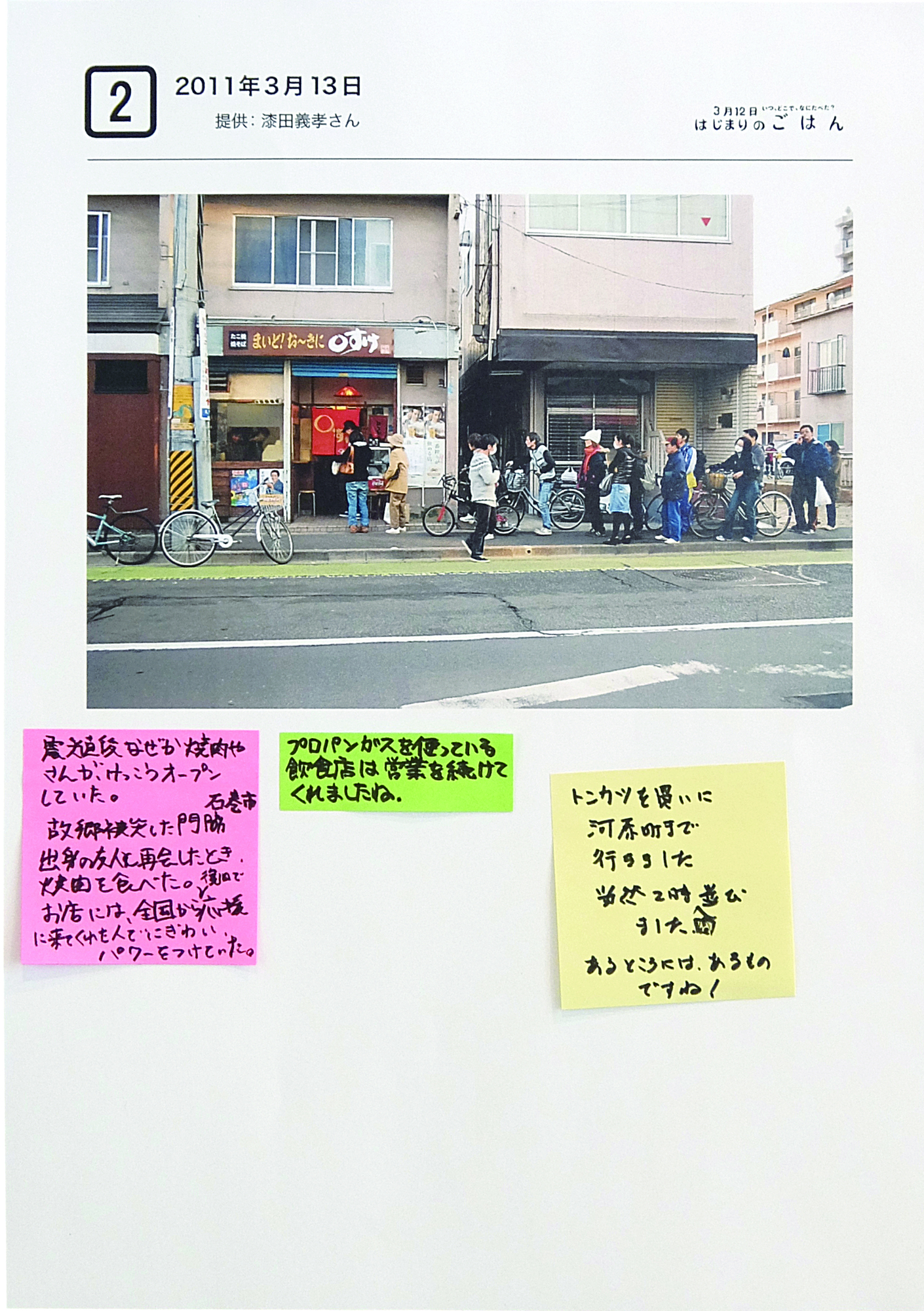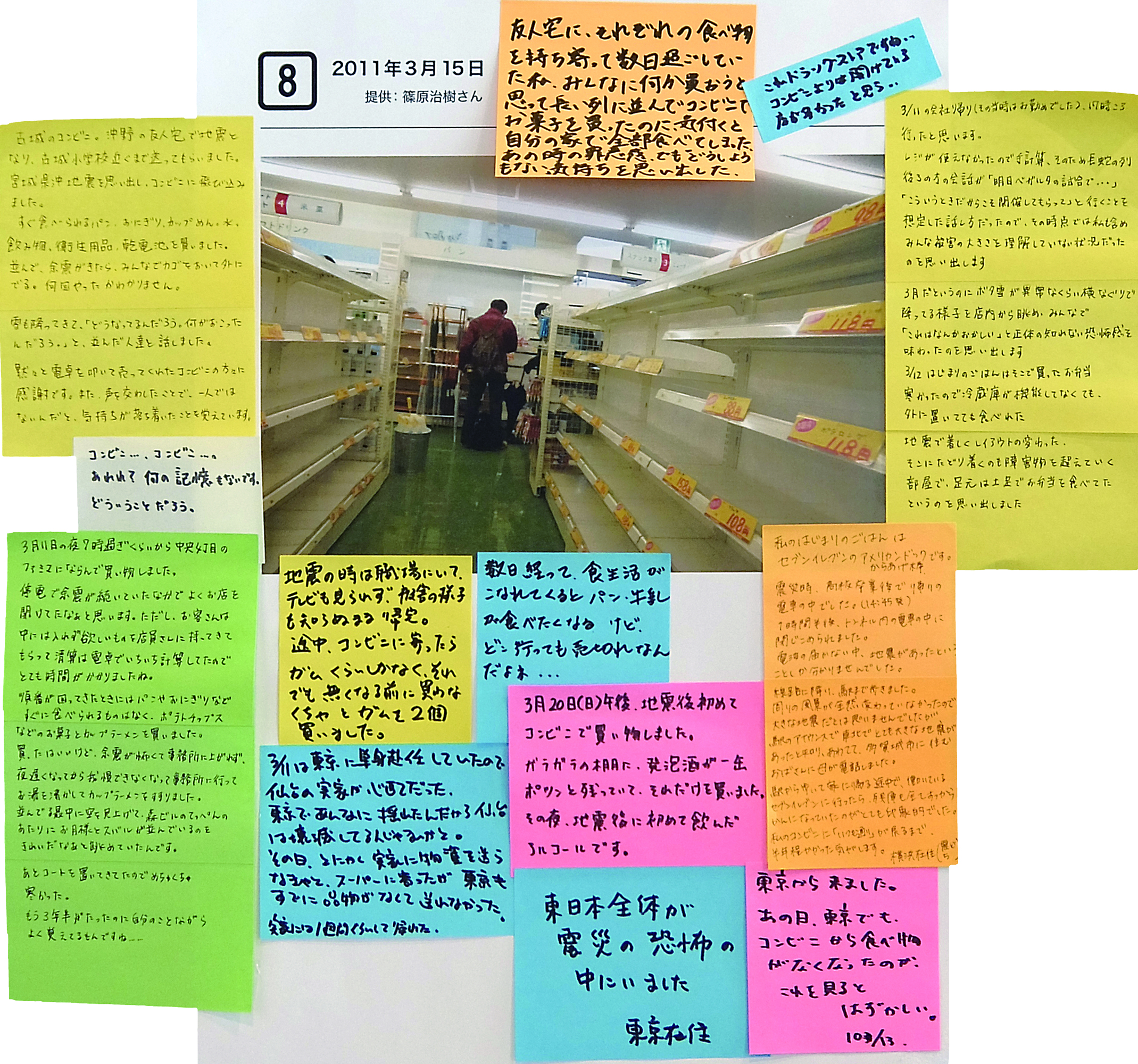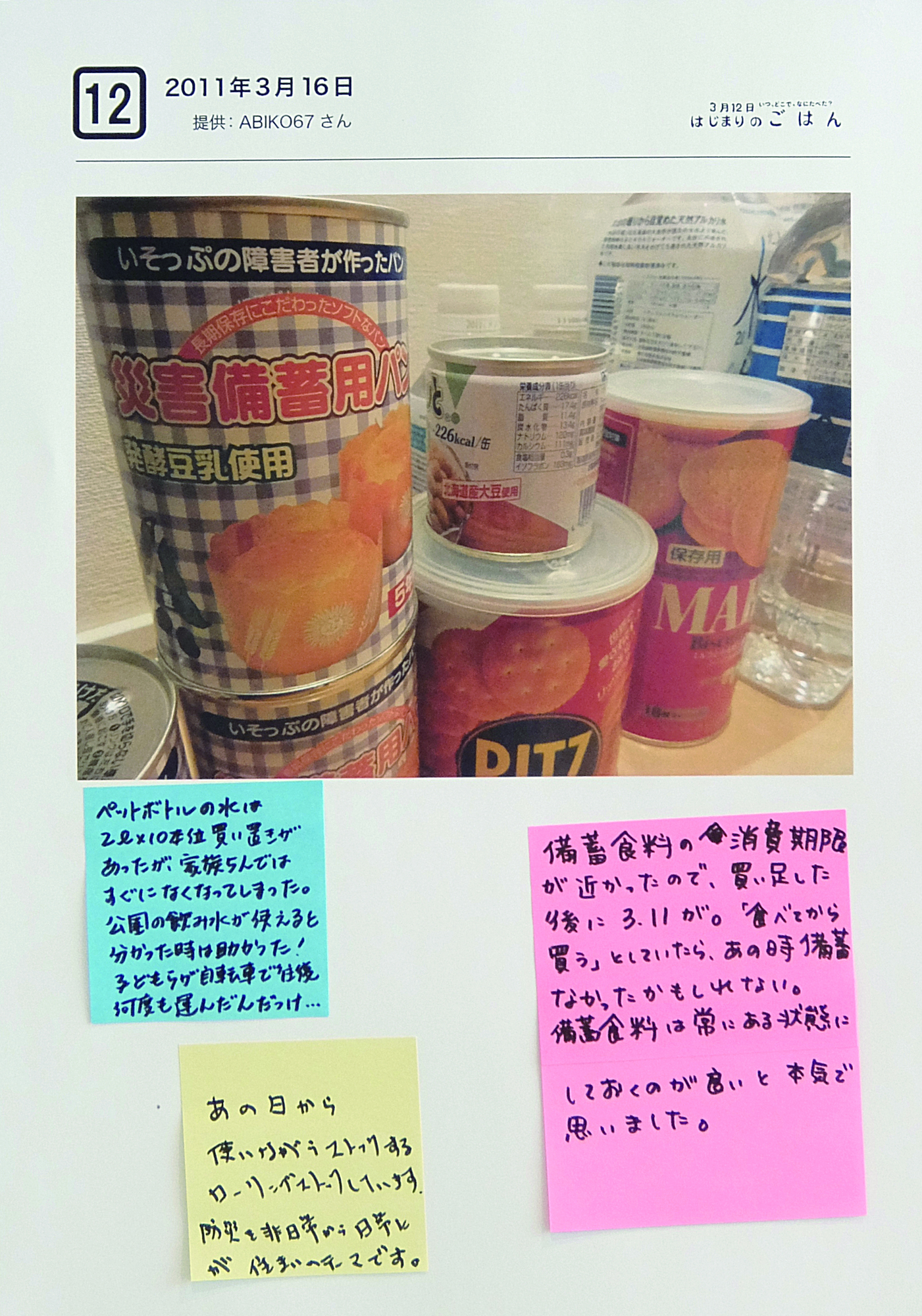March 12: The First Meal After the Earthquake/Individually owned stores 03 “My child was still small, and I could not go outside, so people in the neighborhood bought extra eggs and meat for our family at the morning market.”
3.11 Archive of Memories & Reccorder311 Collaborative Project
This article introduces the sticky notes visitors contributed and shows what the panels looked like during the exhibition period of “March 12: The First Meal After the Earthquake ––– When, Where, and What Did You Eat?” For the summary of each exhibited panel, please check out the [INDEX] page.
▼About “March 12: The First Meal After the Earthquake”
▼About sticky note comments
[Fall 2014] Exhibited Panels
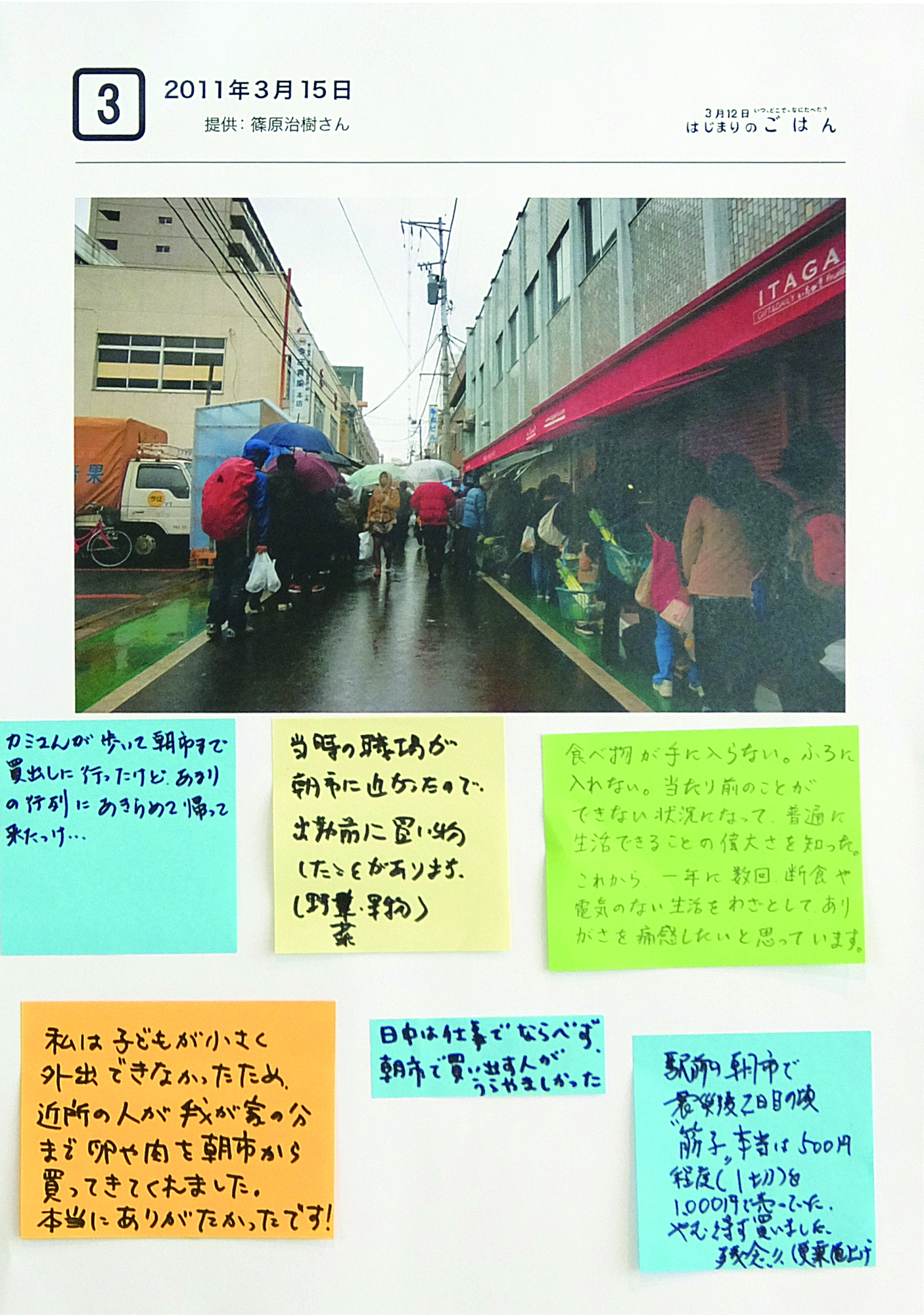
Exhibition Period: October 1st to November 16th, 2014
Venue: Sendai Mediatheque
[Spring 2015] Exhibited Panels
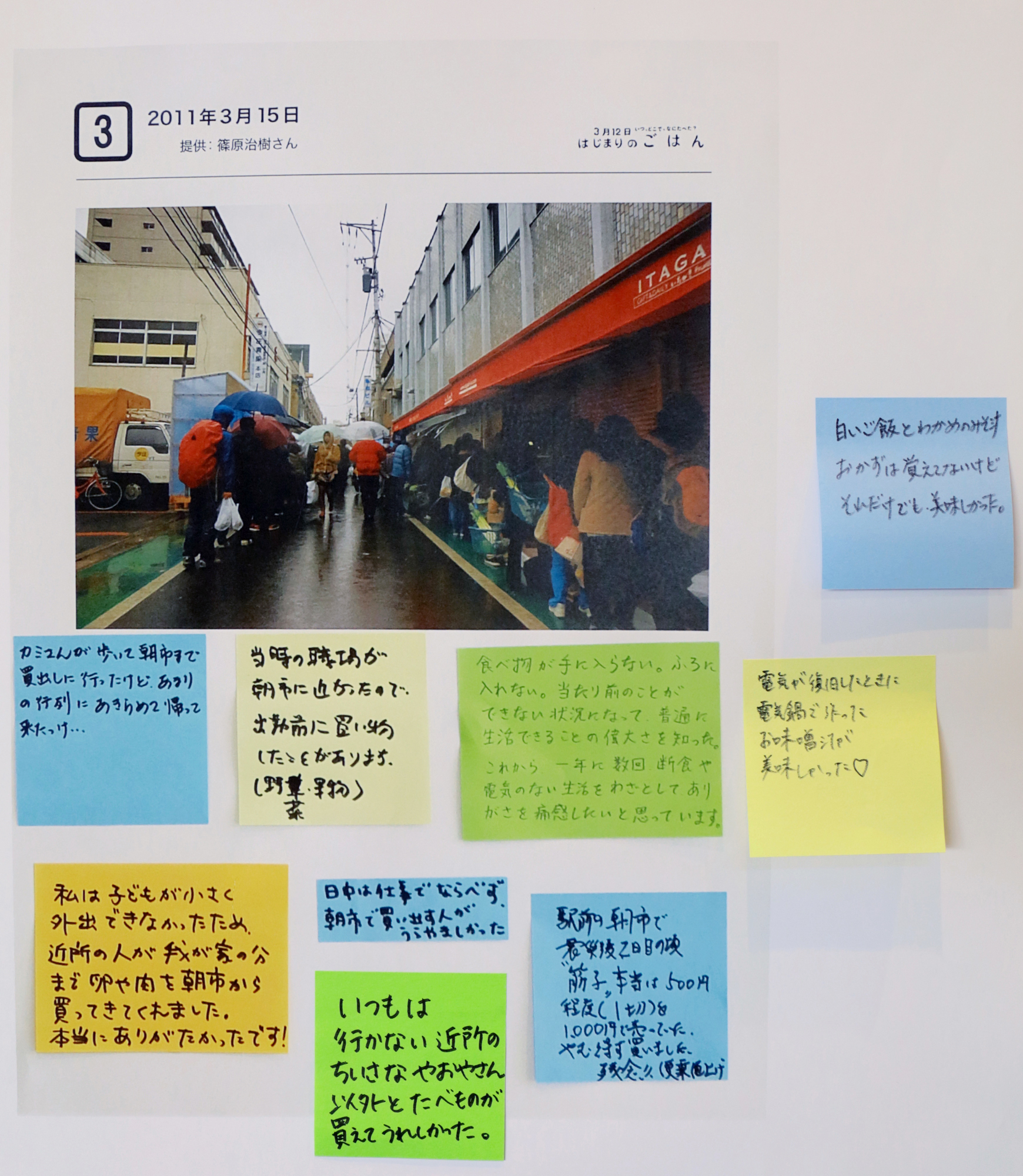
Exhibition Period: February 20th to March 18th, 2015
Venue: Sendai Mediatheque
*On the panels with sticky notes from the [Fall 2014] exhibition, visitors added their own comments.
Comments by Visitors about the Panels
Some comments are not directly related to the photo content or location.
▷I remember my wife walked to the morning market to buy some groceries, but the line was so long she gave up and came home…
▷My child was still small, and I could not go outside, so people in the neighborhood bought extra eggs and meat for our family at the morning market. It helped us so much!
▷My workplace at the time was close to the morning market, so I went shopping there before work. (vegetables and fruits)
▷I had to work during the day, so I couldn’t wait in line. I was envious of the people shopping at the morning market.
▷I couldn’t get food or take a bath. Things that I had taken for granted were not available anymore, and I realized how precious it was to have an ordinary life. From now, I will try fasting and living without electricity a few times a year on purpose to remind myself how precious these things are in our lives.
▷About two days after the disaster at the morning market in front of the station, salted salmon roe which usually costs about 500 yen (per slice) was selling for 1,000 yen. I had no choice but to buy it. A bummer!! An opportunistic price hike.
▷I had white rice and wakame seaweed miso soup. I don’t remember what I else I had on the side, but even just these were delicious.
▷When the electricity came back on, I cooked some miso soup using an electric pot, and it was delicious♡
▷I went to a little greengrocer in my neighborhood that I don’t usually visit. I was happy to be able to buy more food than expected.
About sticky note comments
People from many different backgrounds visited this exhibition, including people from Sendai City, as well as people from everywhere, including coastal areas, inland areas, inside and outside of Miyagi Prefecture, and inside and outside of Japan. There were also both adults and children, and these people left comments on sticky notes about what they remembered from seeing exhibited photos at the time of the disaster. Here, the original text comments that were left are posted without editing. Also, English text in gray are translations of Japanese texts.
Original Photo
“People Waiting in Line to Buy at the Sendai Morning Market” *
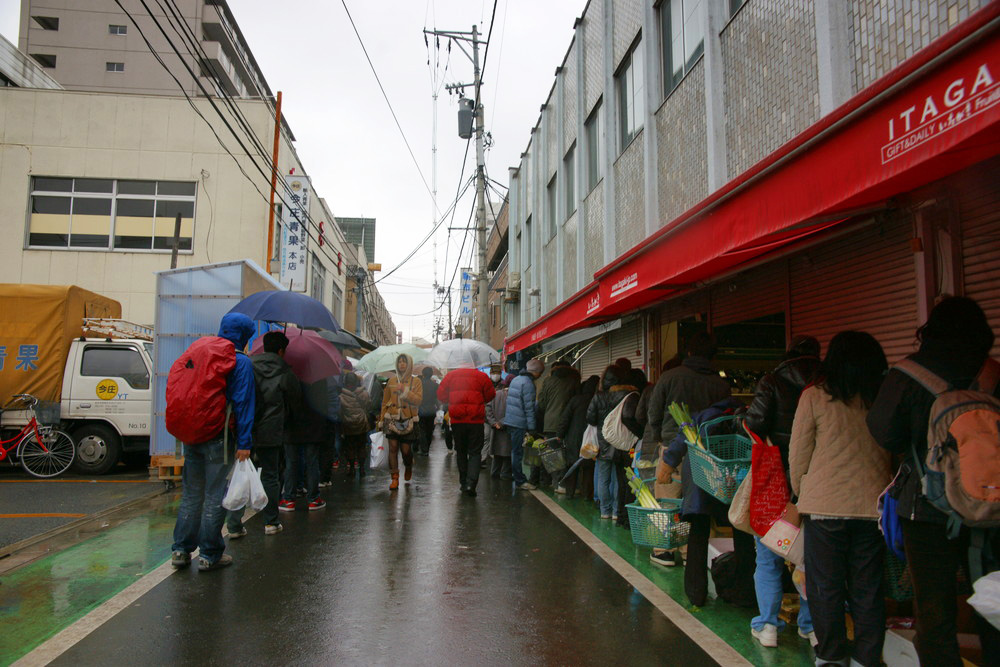
March 15th, 2011
Sendai Asaichi (Morning Market)
3-8 Chuo,Aoba Ward, Sendai City, Miyagi Prefecture
Recorded by: SHINOHARA Haruki
*Source:
Photo Collection “3.11 Record of Memory—3.11 Disaster that Citizens Took as Record of Memory—”
Issued and provided by: 20th Century Archive Sendai
About “March 12: The First Meal After the Earthquake ––– When, Where, and What Did You Eat?”
The project is a participation style exhibition that exhibits photos of “meals” at the time of the disaster, such as photos related to emergency food distribution, grocery shopping, and people sharing meals at a table. Visitors were free to write sticky notes about what they remembered after seeing the photos and how they lived at the time. This exhibition was planned collaboratively by 3.11 Archive of Memories (at the time, called 20th Century Archive Sendai) and the center for remembering 3.11 (recorder311).
Please check out the [INDEX] page for the summary of each exhibited panel and utilization/application examples.
| Recorded on | 15 March, 2011 | |
|---|---|---|
| Recorded by | SHINOHARA Haruki | |
| Recorded at | Sendai Asaichi (Morning Market) 3-8 Chuo, Aoba Ward, Sendai City, Miyagi Prefecture | |
| Series |








